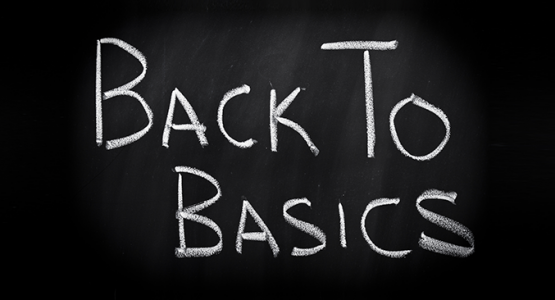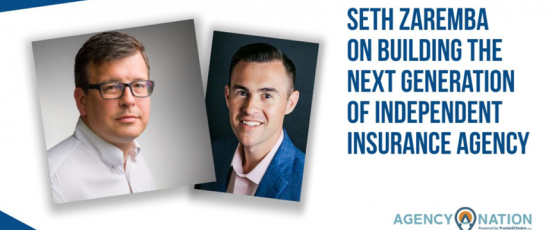
When it comes to customer experience, you need to start with the basics.
In my previous blog, I talked about the difference between customer experience and customer service and why it’s vital for independent agents to focus on relationships. After all, relationships are our greatest strength.
Like any new skill, you need to learn the basics of customer experience before you can master the art.
Today’s blog is going to provide you with a solid framework to take your customer experience to the next level.
Start simple
At my last employer, the insurance brokerage firm had restructured from a regional alignment to product specialties. I was put in charge of a commercial E&S MGA team that suffered heavily in the former alignment. In other words, I had to right the wrong.
My first thought was “Crap.”
My second thought was “Let’s pull some folks together and think about the basic ‘day one’ necessities that need to be in place to ensure our customer experience stops moving in the wrong direction.
Outside of the basics that I won’t waste your time with, like a seating chart, we started a simple list. Actually, let’s take a sec for a quick public service announcement. Never take ownership of filling out a seating chart. It’s the quickest way to get everyone to hate you in less than one day. OK, back to customer experience…
These basics served as the framework to help our team properly service our existing business:
-
Respond to requests ASAP:
How could we properly service our clients if someone was out of the office (scheduled or unexpectedly)? We can’t wait 24 to 48 hours to acknowledge a request. That’s why we provided our team members with access to each other’s email.If you don’t respond fast enough to clients, you’ll lose business to your competition.
-
Program your phones for user-friendly service:
If a client calls a team member directly, and they are in need of something urgent, what happens when that person is not available? We programmed our phones to include a 0-out functionality to ensure clients could get in touch with another person right away. This is especially important for simple items like certificates.If your phone system isn’t user-friendly and quick, it’s a surefire way to lose a client now or at renewal.
-
Build a skills matrix:
Our skills matrix represented every associate on the team and their carriers/lines of business. Each team member honestly filled out the matrix so we could visually see where our largest gaps were in carrier and line-of-business knowledge. This became our initial training focus.If you have gaps in product knowledge, you’ll lose business to your competition.
-
Set and communicate service-level agreements (SLAs):
I communicated our SLAs based on specific tasks (new business account, renewal account, endorsement request, other service request, etc.). Our SLAs were aggressive, achievable and in-line with industry expectations. Most importantly, they were something we had to strive for as a team.If your SLAs are outside of industry standards, you’ll lose business to your competition.
-
Build a team calendar:
This calendar included the on-call schedule, late-shift schedule, time off, etc. It was vital that we had the right coverage from 8 a.m. to 6 p.m. We broadcasted those hours on our website, marketing materials and other communications. We had to be ready at all times.If you don’t have necessary coverage during business hours, you’ll lose business to your competition.
Are you in the driver’s seat?
I’m sure you are thinking, “Who is this micro-manager?” And I tend to agree when I re-read this. However, these were our clients’ expectations, and we had been missing the mark for years.
The truth of the matter? We were missing the basics in customer experience: not responding to emails fast enough, not calling agents back, not being available during key times, not having enough knowledge in our product offerings, and the list goes on.
If we did not meet our clients’ expectations, they had many other options they could easily take their businesses to instead. We were not in the driver seat when it came to our customer experience levels.
It’s vital to motivate your team to reach for something greater than average customer experience. Think about the common themes below from your agency’s standpoint:
Responsiveness:
-
What happens when you don’t respond quick enough to a lead or client request?
-
What does your back-up system look like? Can everyone see each other’s work (email, AMS, etc.) in order to provide the necessary service to clients regardless of the account or who is in the office that day?
Immediate Service:
-
Do you have processes in place for clients to easily and quickly reach a team member when their primary contact is unavailable?
-
When clients leave voicemails/send emails/fill out a form, do you have business hour SLAs established with your team? Do you set those expectations with customers? For example, voicemail recordings should let customers know when they can expect a call back.
-
Are your SLAs in line with your customers’ expectations?
Resources and Training:
-
Do you have a formalized way (like a skills matrix) to identify training, knowledge and product line gaps in your agency?
-
If you pull people away from their sales efforts/relationships for training, is it worth their time and adding value to the agency?
Availability:
-
How do you ensure you have someone available during all business hours to provide the right customer service?
-
What about after hours? What resources do you provide your clients in the event of an emergency after normal business hours?
Again, the above areas are where we consistently heard feedback from our customers. When I was tasked with moving our team forward, my goal was to not add fuel to the fire by getting back to the basics of customer experience.
Once you can master the basics, you can take the next steps to build a truly amazing customer experience.
Through this blog series, I hope to create meaningful dialogue around customer experience and share best practices among agencies. I also hope my customer experience journey offers you thought-provoking questions to spark conversations between you and your team.
If you have any questions, please reach out to OIA!





